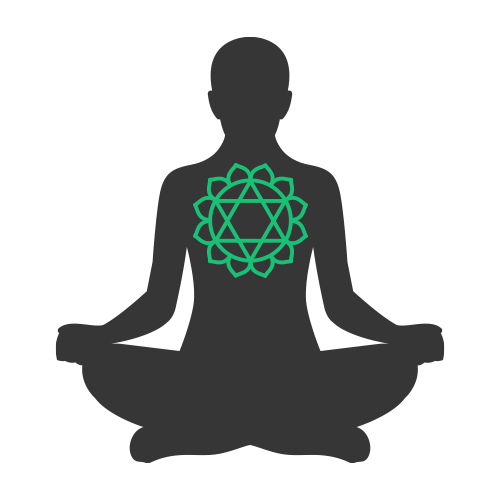What is Chakra?
Chakras are energy centers in the subtle body, originating from ancient Indian spiritual traditions. There are seven main chakras aligned along the spine, each associated with specific physical, emotional, and spiritual aspects. These energy wheels are believed to regulate the flow of life force or “prana” throughout the body, influencing overall well-being. The chakras include the Root Chakra (survival), Sacral Chakra (creativity), Solar Plexus Chakra (personal power), Heart Chakra (love), Throat Chakra (communication), Third Eye Chakra (intuition), and Crown Chakra (spirituality). Balancing and aligning these chakras is thought to enhance holistic health and promote harmony between mind, body, and spiri
What is Seven Chakra?
the seven chakras are vital energy centers in the body, drawing from ancient Indian traditions. Aligned along the spine, each chakra corresponds to specific physical, emotional, and spiritual elements. The Root Chakra, at the base, governs survival instincts, while the Sacral Chakra influences creativity and emotions. The Solar Plexus Chakra regulates personal power and confidence. The Heart Chakra focuses on love and compassion, the Throat Chakra on communication, and the Third Eye Chakra on intuition. At the crown, the Crown Chakra signifies spirituality. Balancing these chakras is believed to optimize overall well-being, fostering a harmonious connection between the physical and metaphysical aspects of existence.
Seven Chakaras
1 root chakra
2 sacral chakra
3 solar plexus chakra
4 heart chakra
5 throat chakra
6 third eye chakra
7 crown chakra
1 Root Chakra
the root chakra ,or muladhara is the first energy center in the human body according to hindu and yogic traditions. located at the base of the spine, it symbolizes stability , grounding, and servival instincts. associated with the color red, it governs the physical realm, connecting individuals to the earth’s energy. a balanced root chakra fosters a sense of security , stability , and basic needs fulfilllment. when imbalanced ,it may manifest as fear , insecurity , or lack of grounding. practices such as meditation , yoga , and mindfulness can help align and activate the root chakra , promoting a strong foundation for overall well-being S

2 Sacral Chakra
The sacral chakra , or svadhisthana , is the second energy center in the human body within eastern spiritual traditions. situated in the lower abdomen , it governs creativity , emotions , and sexuality. represented by the color orange , it embodies passion , pleasure , and the fluidity of life. a balanced sacral chakra fosters emotional well-being , creativity , and healthy relationships. imbalances may manifest as emotional instability or intimacy issues. practices such as meditation yoga, and artistic expression are employed to harmonize and activate the sacral chakra, promoting a balanced flow of energy and enhancing one’s connection to their emotional and creative self.

3 Solar Plexus Chakra
The Solar Plexus Chakra, located above the navel, is the third energy center in the body’s subtle system. Representing personal power, confidence, and self-esteem, it governs one’s sense of identity and autonomy. Associated with the element of fire, the solar plexus chakra ignites inner strength and willpower. When balanced, it fosters a harmonious connection between personal empowerment and empathy. Imbalances can manifest as issues with self-esteem or control. Practices like meditation, yoga, and affirmations can help align and activate the solar plexus chakra, fostering a strong sense of self and empowering individuals to navigate life with confidence and purpose

4 Heart Chakra
The heart chakra anahaya, is the fourth energy center in the body according to eastern spiritual traditions. located at the center of the chest, it governs love , compassion, and emotional balance. symbolized by the color green , it signifies unity and connection . a balanced heart chakra fosters empathy , unconditional love , and harmonious relationships. imbalances may lead to issues like emotional detachment or codependency. practices such as meditation , yoga, and acts of kindness are employed to align and activate the heart chakra , facilitating emotional healing and promoting a compassionate connection with oneself and others.

5 Throat Chakra
The throat chakra, the fifth energy center in the body’s subtle system, is crucial for communication and self-expression. Located at the throat region, it governs speech, creativity, and truthfulness. Represented by the color blue, a balanced throat chakra fosters clear communication, articulate expression, and the ability to listen attentively. When blocked, it may lead to difficulty in expressing oneself, fear of judgment, or communication issues. To balance the throat chakra, practices like meditation, chanting, and embracing authentic self-expression are recommended. A harmonious throat chakra aligns one’s thoughts and feelings, promoting open communication and creative flow

6 Third Eye Chakra
the third eye chakra, situated between the eyebrows , is the sixth energy center in the body’s spiritual system. symbolized by indigo or deep blue , it governs intuition , insight, and spiritual awareness. referred to as ajna in sanskrit, a balanced third eye chakra enhances clarity of thought , inner vision, and the ability to perceive subtle energies. when blocked , it may led to confusion , lack of clarity , or a disconnect from intuition . practices such as meditation , spiritual growth , and a deeper understanding of oneself and the world

7 Crown chakra
The crown chakra, also known as Sahasrara in Sanskrit, is the seventh and highest energy center in the human body according to Hindu and yogic traditions. Located at the top of the head, it represents spiritual connection, universal consciousness, and enlightenment. The crown chakra is associated with the color violet or white and is linked to higher states of awareness, self-realization, and divine wisdom. Balancing and opening the crown chakra is believed to foster a deep sense of unity with the universe, spiritual growth, and a profound understanding of one’s purpose in life. Practices like meditation and mindfulness are often recommended for its activation.


